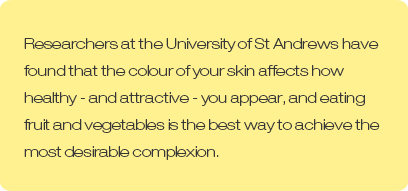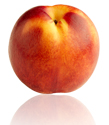



"Most previous work on faces has focussed on the shape of the face or the texture of the skin, but one of the most variable characteristics of the face is skin colour," said Dr Ian Stephen, now at the University of Bristol.
"We knew from our previous work that people who have more blood and more oxygen colour in their skins looked healthy, and so we decided to see what other colours affect health perceptions. This has given us some clues as to what other skin pigments may relate to a healthy appearance."
Skin that is slightly flushed with blood and full of oxygen suggests a strong heart and lungs, supporting the study's findings that rosier skin appeared healthy. Smokers and people with diabetes or heart disease have fewer blood vessels in their skin, and so skin would appear less rosy.
The preference for more golden or 'yellow-toned' skin as healthier might be explained by the carotenoid pigments that we get from the fruit and vegetables in our diet.
These plant pigments are powerful antioxidants that soak up dangerous compounds produced when the body combats disease. They are also important for our immune and reproductive systems and may help prevent cancer.
They are the same dietary pigments that brightly coloured birds and fish use to display their health and attract mates, and the researchers think that similar biological mechanisms may be at work in humans.
"In the West we often think that sun tanning is the best way to improve the colour of your skin," said Ian Stephen, "but our research suggests that living a healthy lifestyle with a good diet might actually be better."
Melanin, the pigment that causes the tan colour when you expose your skin to the sun, makes the skin darker and more yellow, but participants in the study chose to make skin lighter and more yellow to make it look healthier.
"This discovery is very exciting and has given us a promising lead into cues to health," said Professor David Perrett, head of the Perception Lab at the University of St Andrews, where the research took place.
"What we eat and not just how much we eat appears to be important for a healthy appearance. The only natural way in which we can make our skin lighter and more yellow is to eat a more healthy diet high in fruit and vegetables."
The work was published in the International Journal of Primatology and has been funded by the Biotechnology and Biological Sciences Research Council (BBSRC) and Unilever Research, and published with support from the ESRC and the British Academy.
This article originally appeared here
Dr Ian Stephen’s latest research findings show that the “golden” colour associated with carotenoids is more important when rating attractiveness than masculinity. Read more information here.
